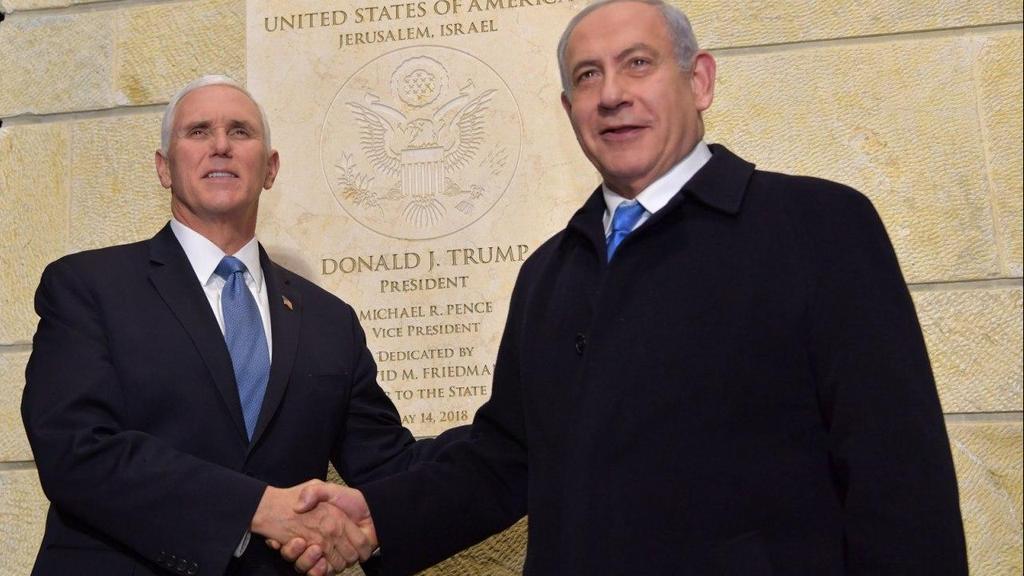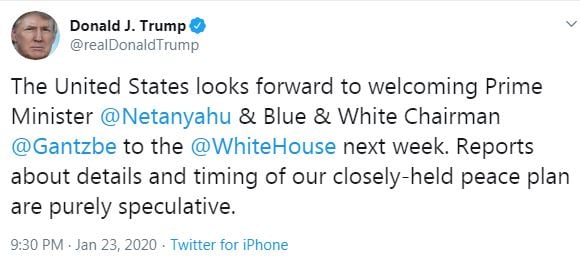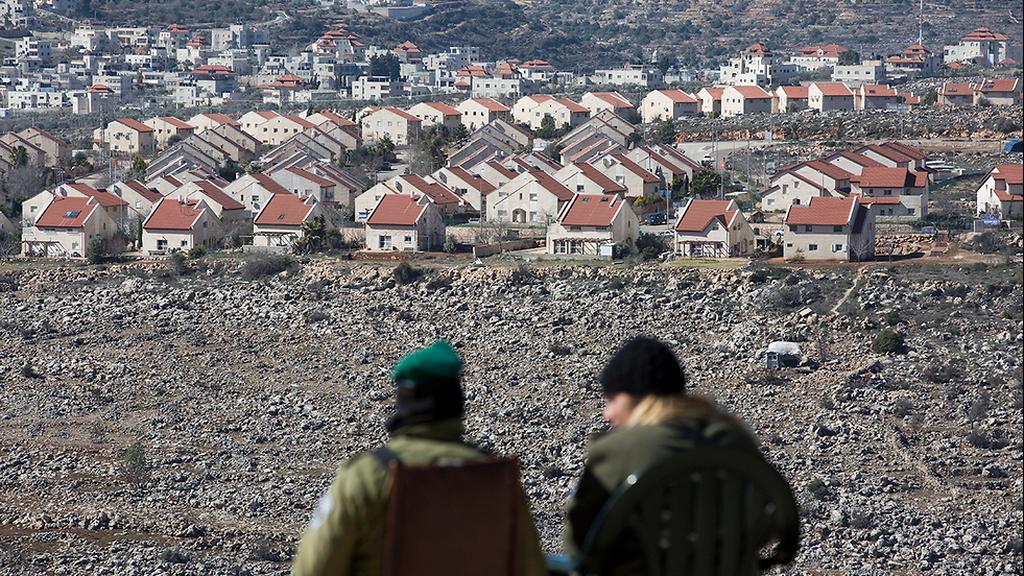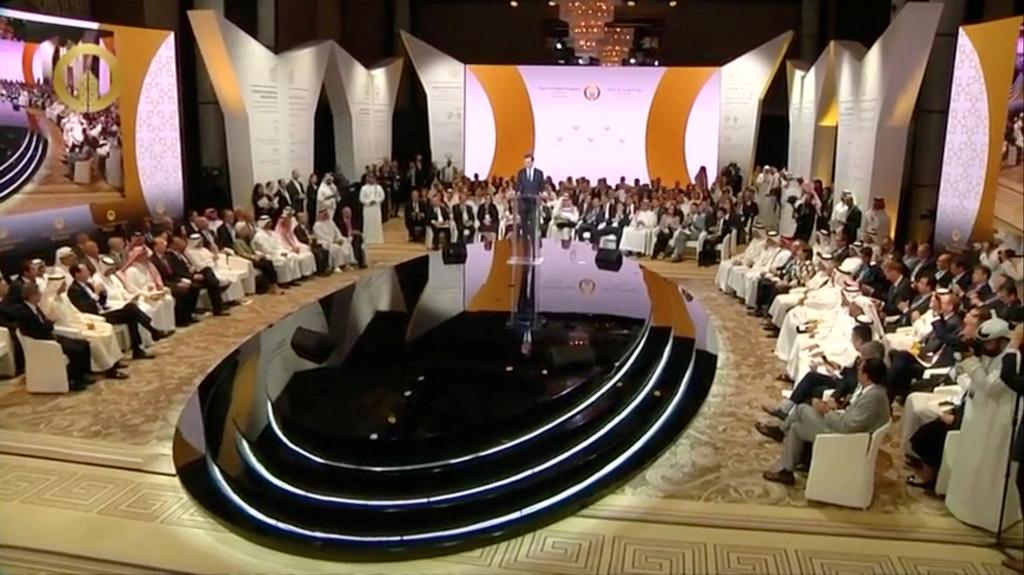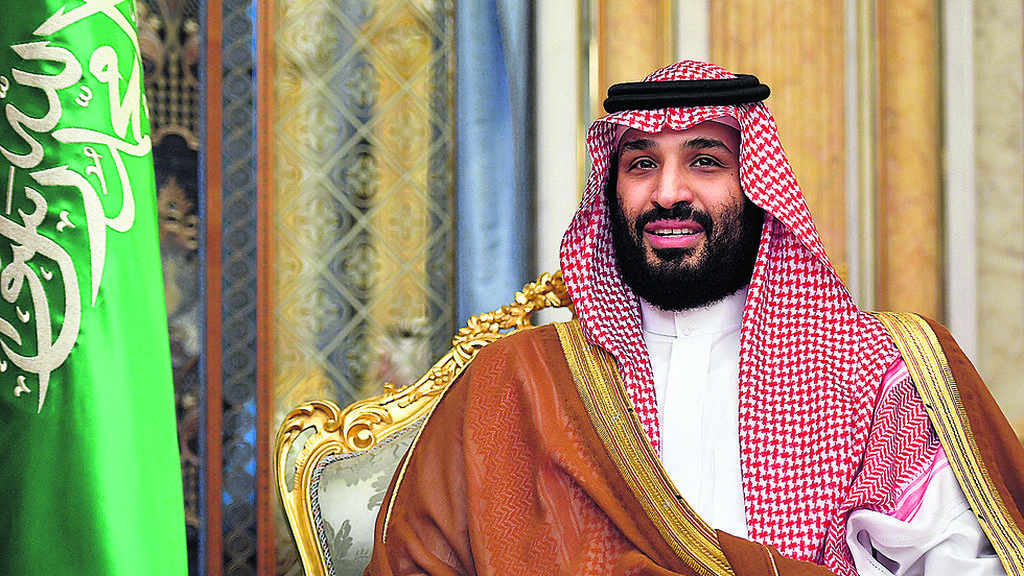Getting your Trinity Audio player ready...
Senior Israeli officials say the details of Donald Trump's long-awaited peace plan, which are now coming to light, were presented to Prime Minister Benjamin Netanyahu in recent weeks and the invitation to Washington for a presentation of the plan was arranged in coordination with him.
Netanyahu said he asked that Blue & White leader Benny Gantz be invited as well, possibly in order to foil any opposition from Gantz to the proposed plan.
The invitation next week coincides with Knesset deliberations on the immunity from prosecution requested by Netanyahu, who is facing charges of bribery, fraud, and breach of trust.
The visit by Israeli officials also coincides with Trump's current impeachment trial in the Senate.
Trump tweeted he is looking forward to welcoming the Israeli leaders to Washington.
The president also said the information reported by the media detailing parts of the plan is incorrect.
Israeli sources who have seen the plan it allows for Israel to annex 30% to 40% of Area C of the West Bank, which is today under Israeli civil and security control. In these areas, Israeli sovereignty will be extended to its settlements alone, including those outside the main blocs and in other areas Israeli rule will include the entire territory.
The U.S. plan suggests Israel immediately extend its sovereignty to all but 15 West Bank settlements to create territorial integrity.
The peace plan also leaves Jerusalem in its entirety in the hands of Israel with the Palestinians given only symbolic access to the city.
This puts an end to Bill Clinton's proposed parameters from 2000, which left the holy basin and the Palestinian neighborhoods of East Jerusalem in the hands of the Palestinian Authority.
6 View gallery
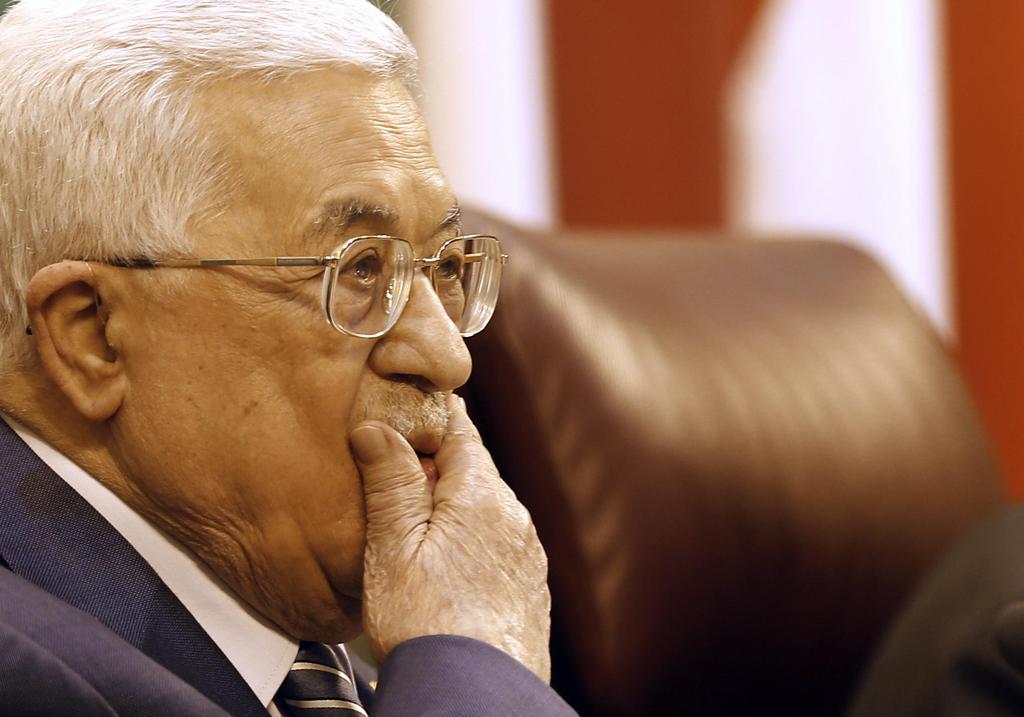

Palestinian President Mahmoud Abbas attends an Arab League summit in Cairo
(Photo: AP)
Palestinians would be given their own state, though it would be severely restricted. It would not be allowed to have an army, not be permitted to forge alliances with other countries and have no control of its air space or borders.
The Palestinians would also be required to demilitarize the Gaza Strip and disarm its Hamas rulers.
The American plan includes a stated intent to see Jewish refugees who fled Arab countries in parity with Palestinian refugees who fled the nascent Israeli state, therefore negating the need for a solution to the right of return of Palestinian refugees into Israel, though a symbolic number will be allowed to return.
The American plan also suggests a land swap to compensate the Palestinians for some of the territory they stand to lose.
The White House believes the economic plan unveiled in the Bahrain conference in June 2019 will provide an incentive to the Palestinian people, who will demand their leadership sign on to the Deal of the Century.
Sources close to the White House say Trump's son-in-law and aide Jared Kushner has enlisted Sunni countries to pledge $50 billion in aid for the Palestinian Authority.
The Trump team also aimed to create a firewall between the Palestinian leadership and moderate Arab countries in order to foil any attempt to block the proposed plan.
Arab leaders such as the Saudi Crown Prince Mohammad bin Salman reportedly said they had previously wasted money on the Palestinians but that would now change.
The difference between earlier peace plans and the Trump plan is that there are more than two partners to the proposed deal. With the Gulf leaders on board, teh White House believes, the Palestinians will not be able to create a false narrative.
"The past plans were theatre that caused nothing but violence and death," American officials said. "This plan has no dead-line, it will require patience."
Israeli officials, however, believe there is no option of a peace plan succeeding with just one of the sides to the conflict on board.
The administration has been trying to enlist right-wing opinion-makers to support the plan. They are primarily concerned with the reaction of Defense Minister Naftali Bennett, who has already come out against the establishment of a Palestinian state.
First published: 00:20, 01.24.20


